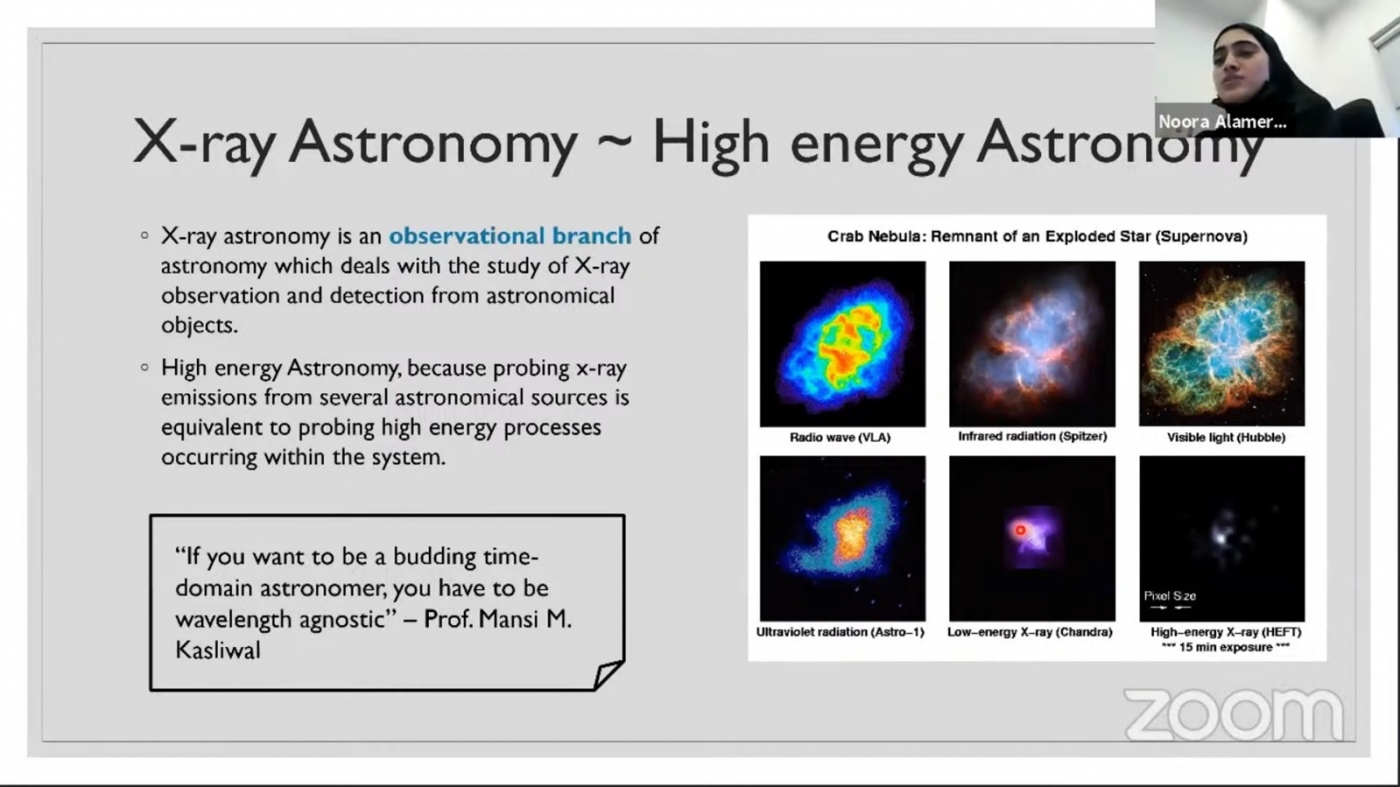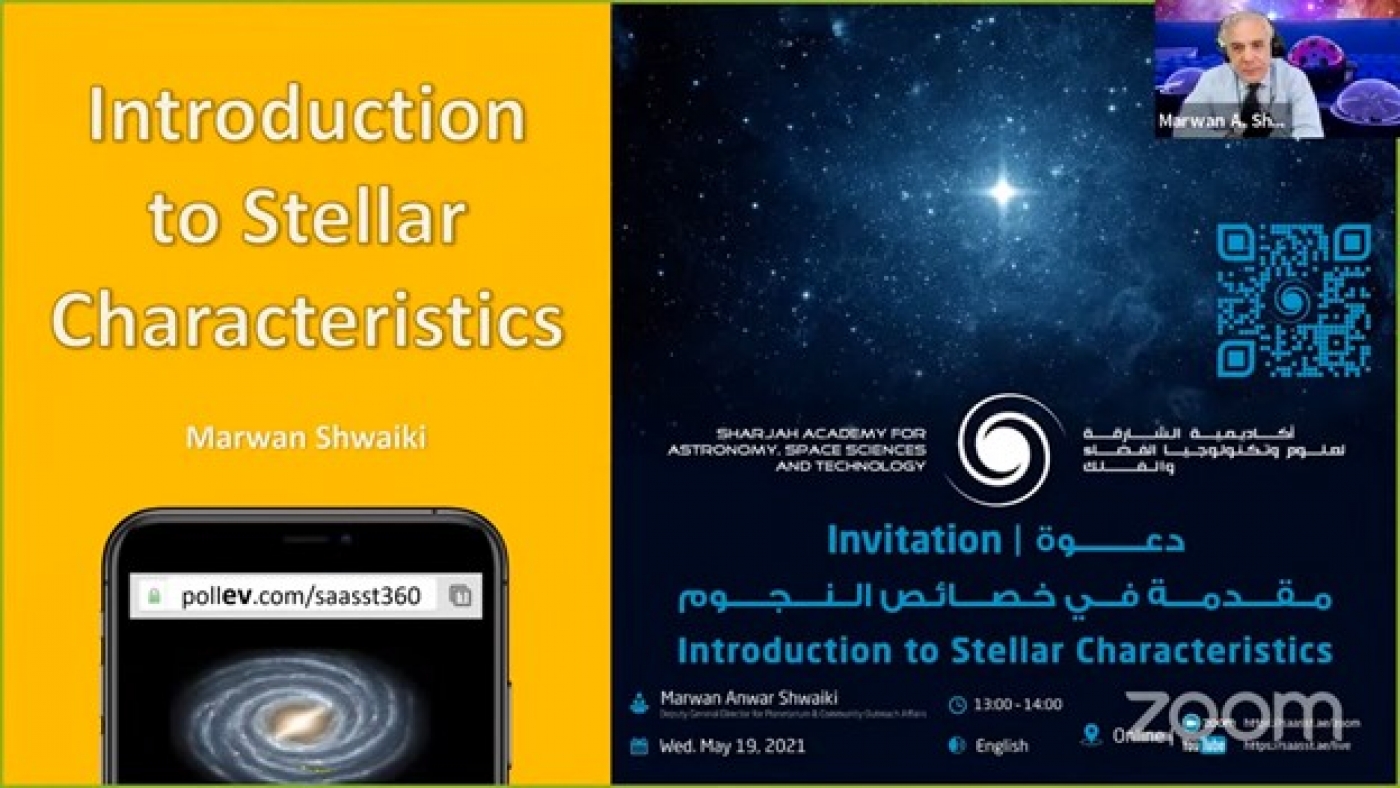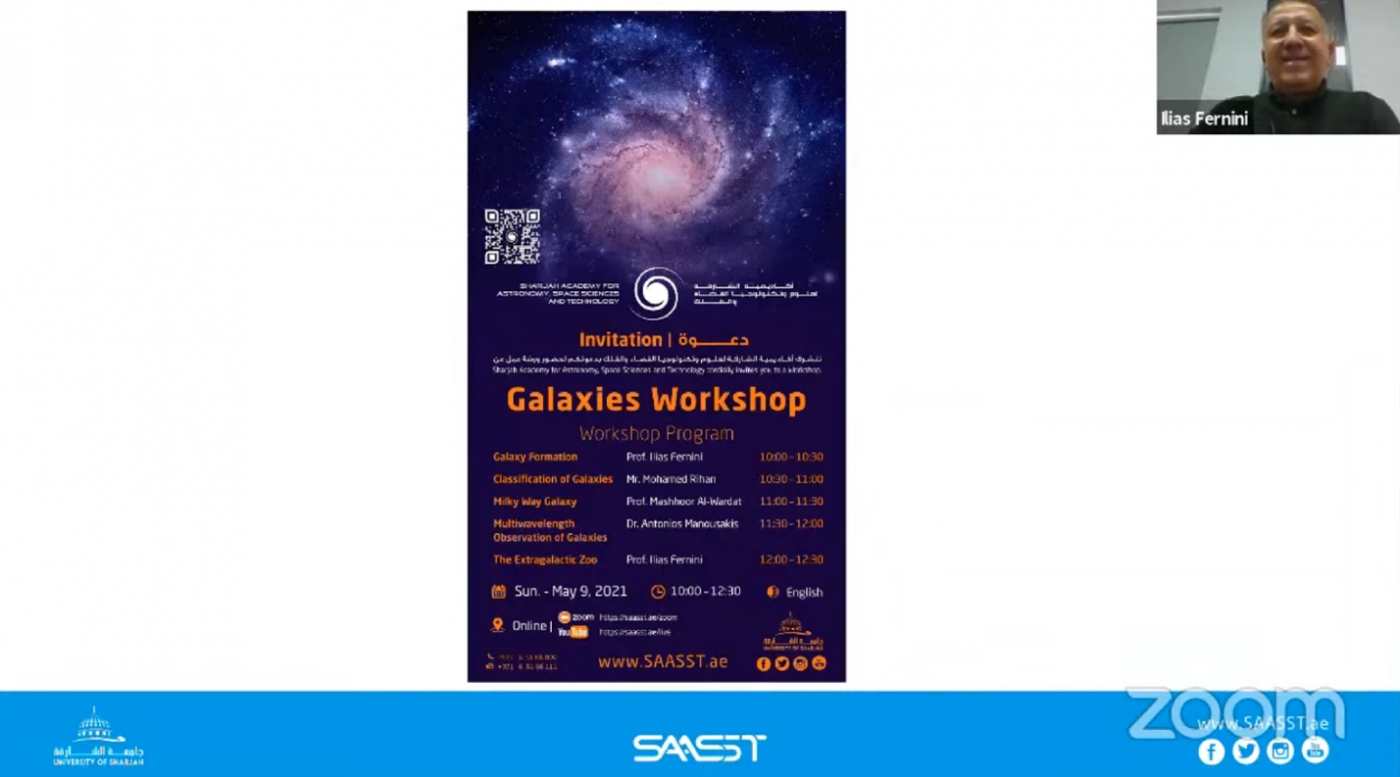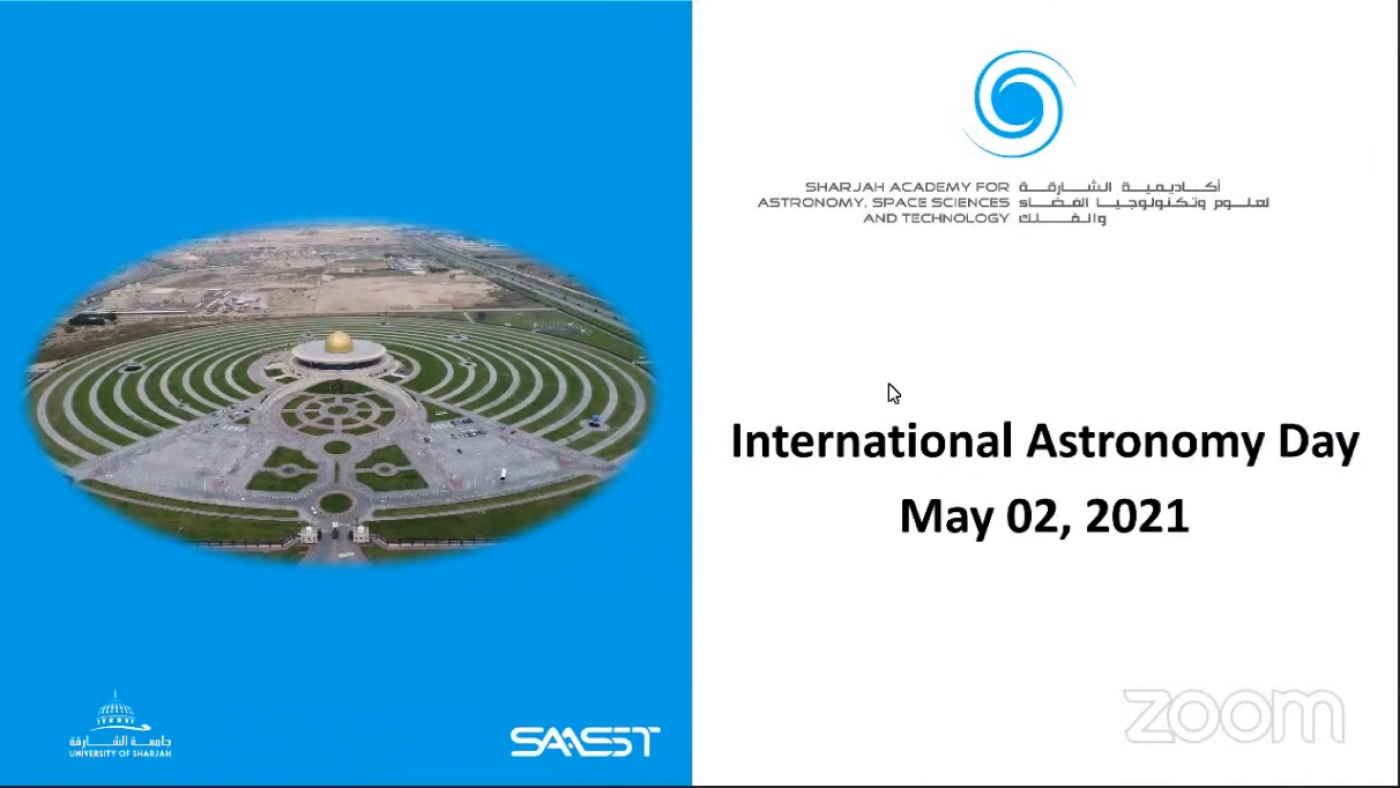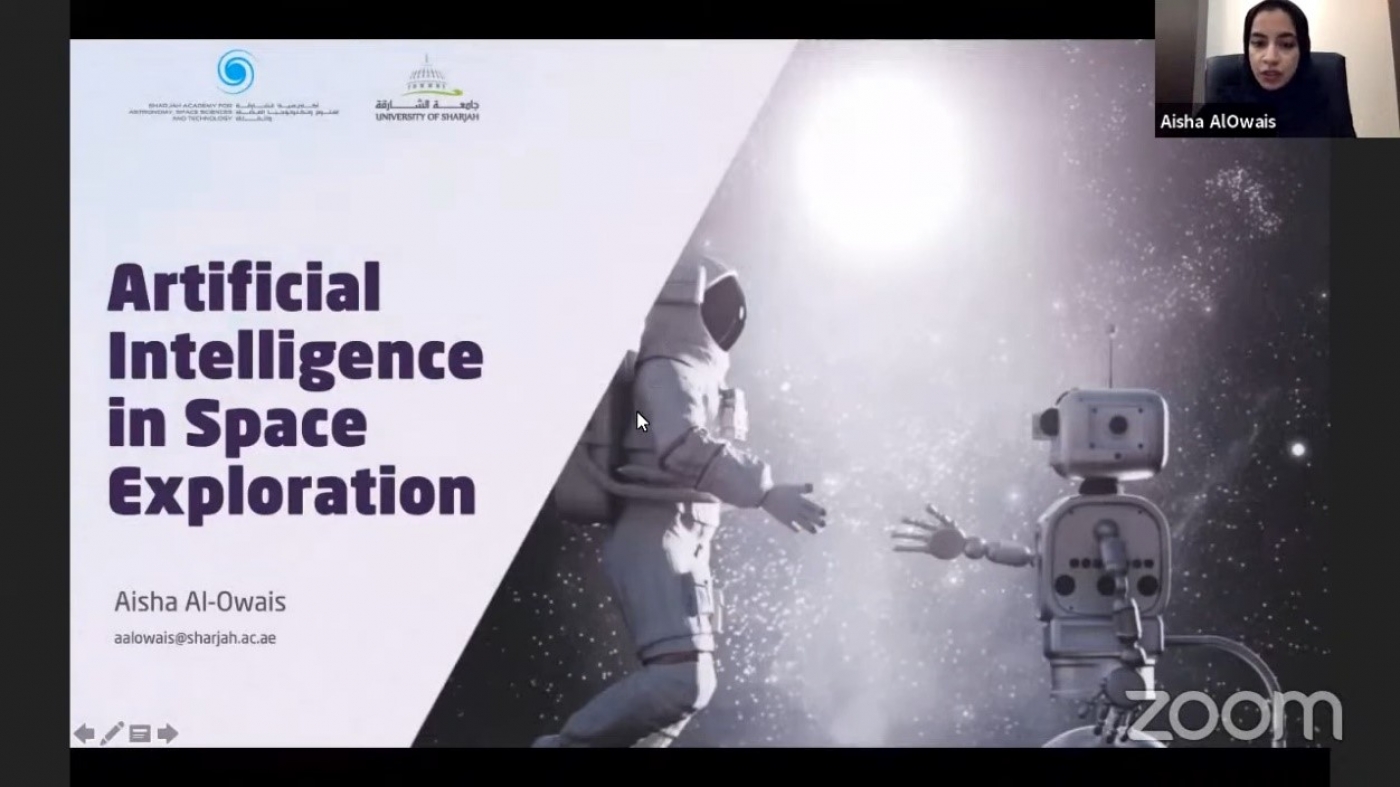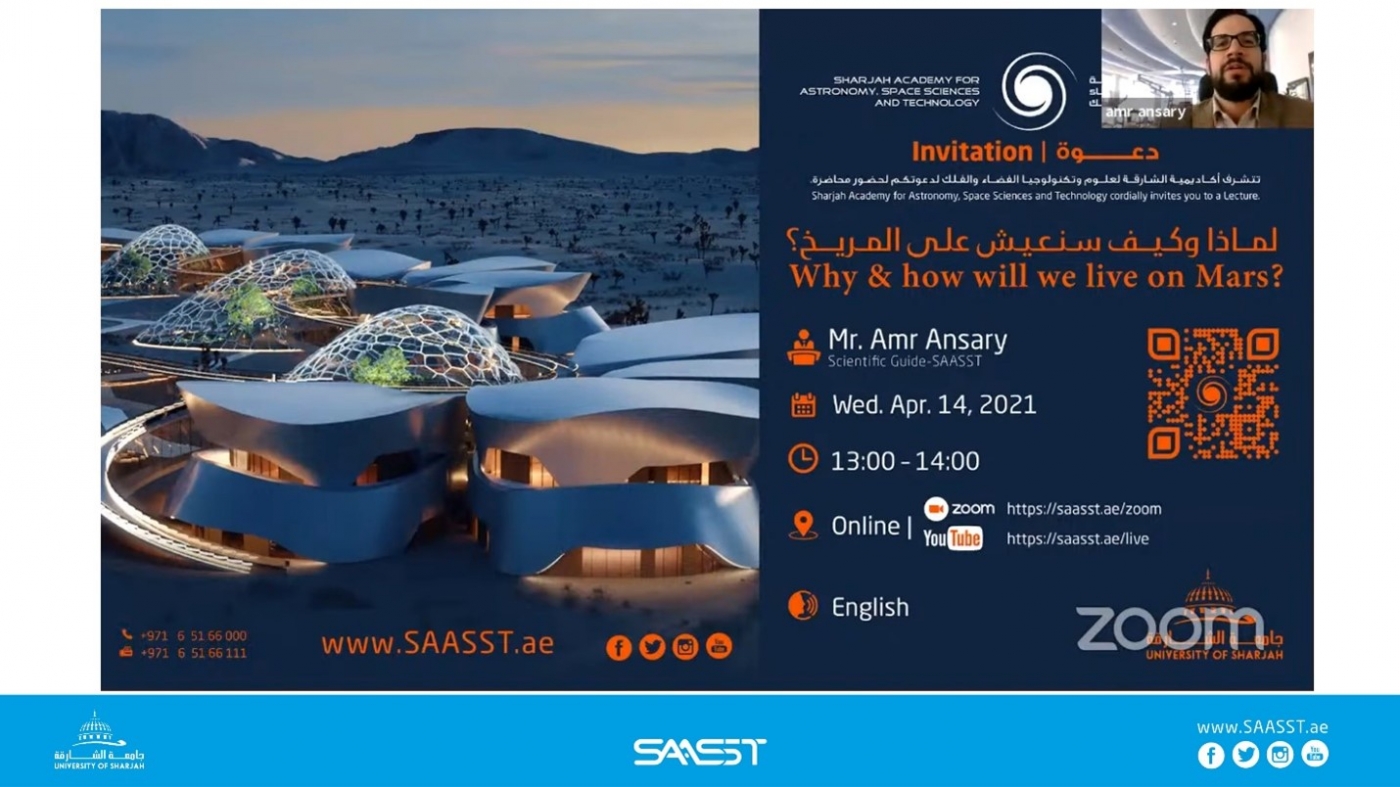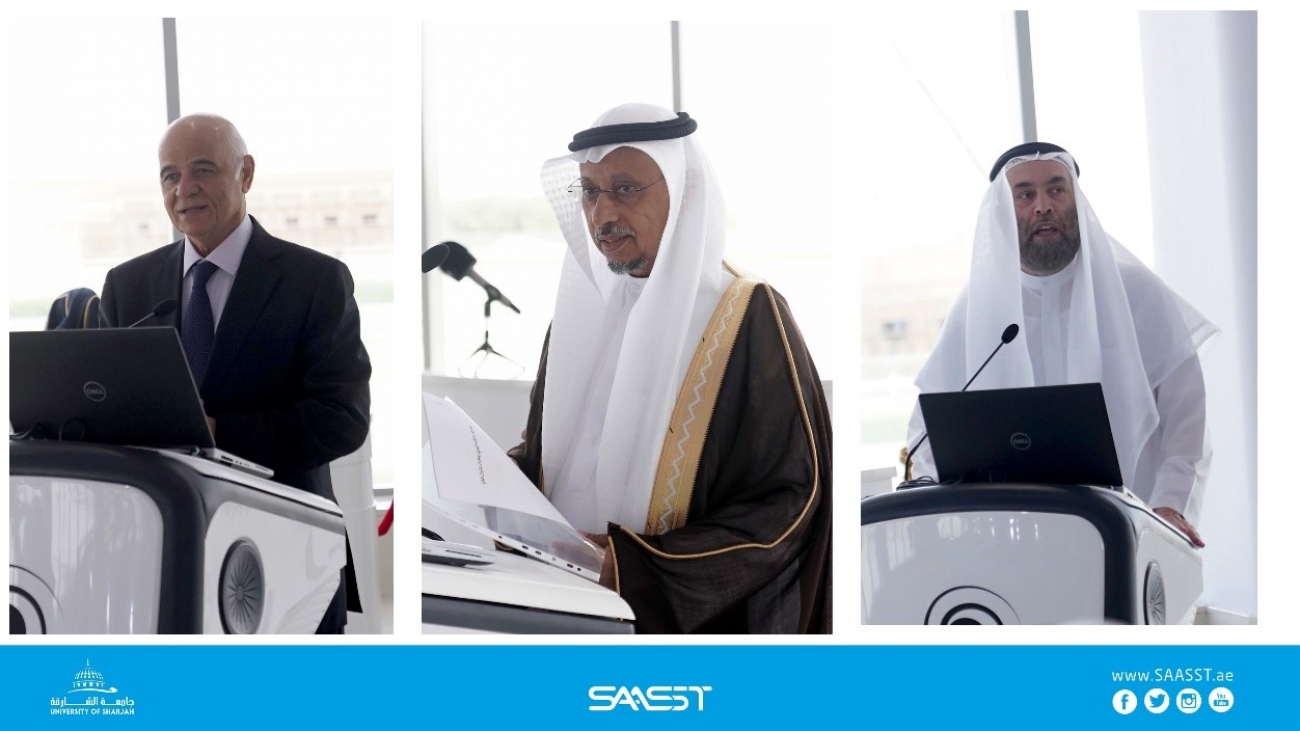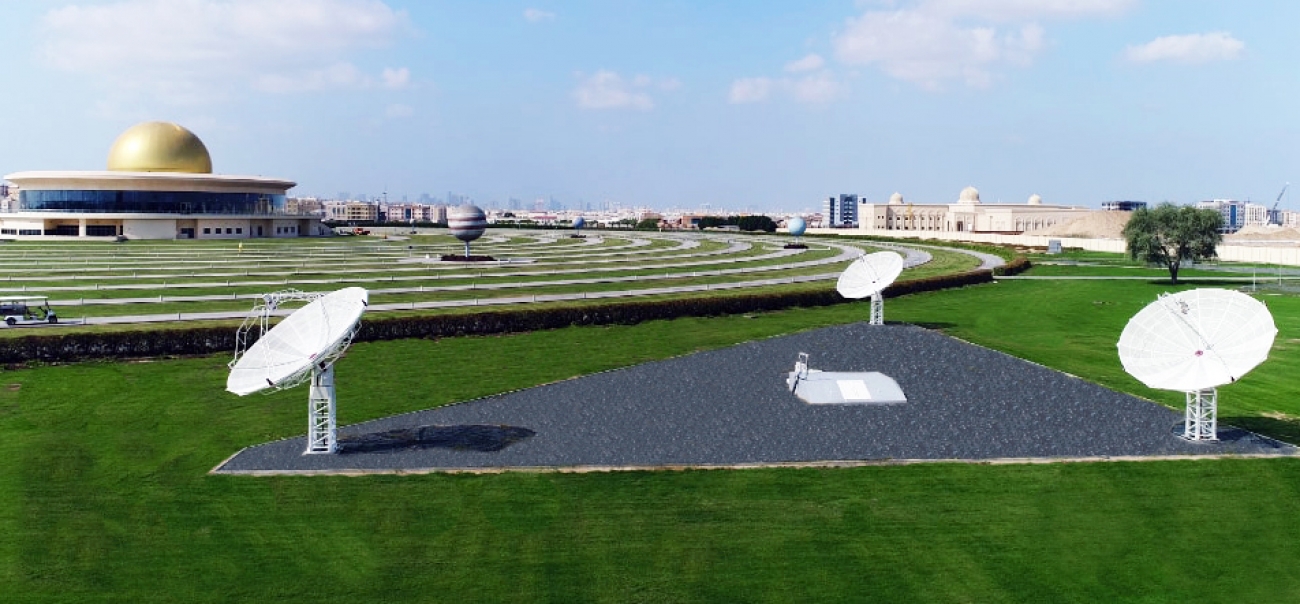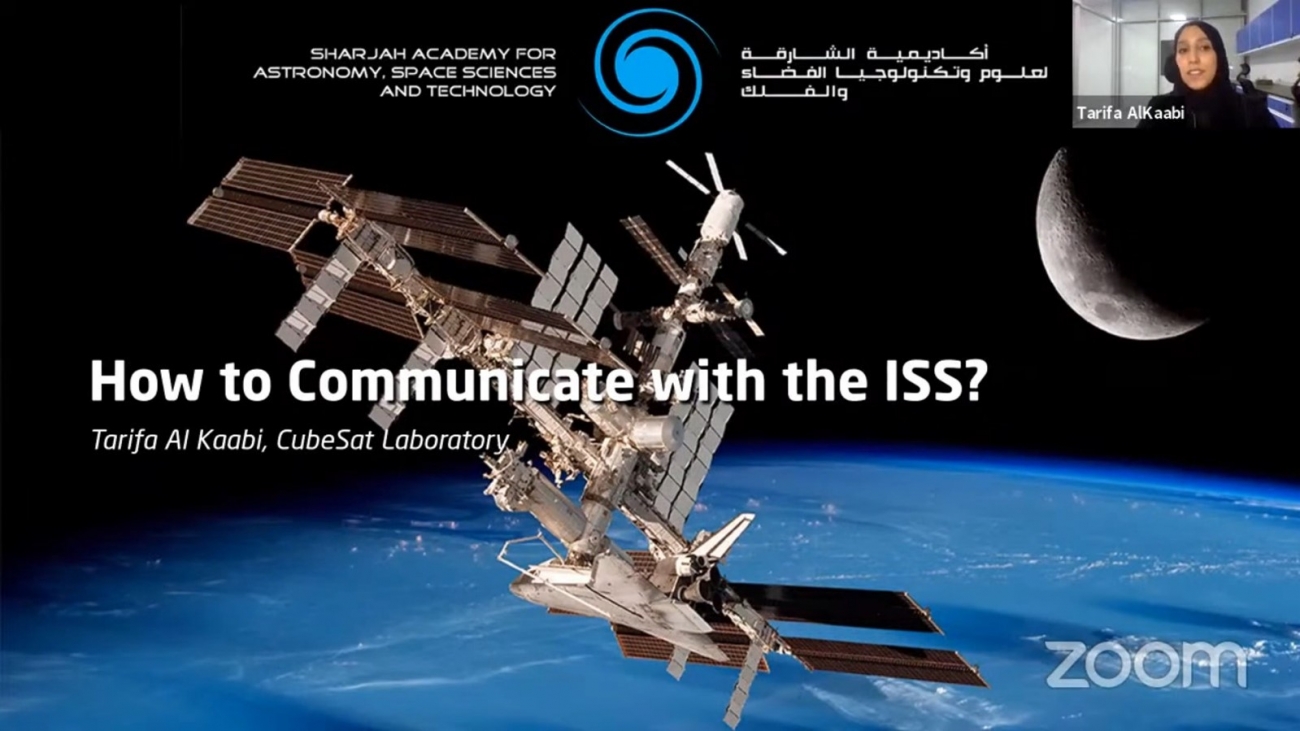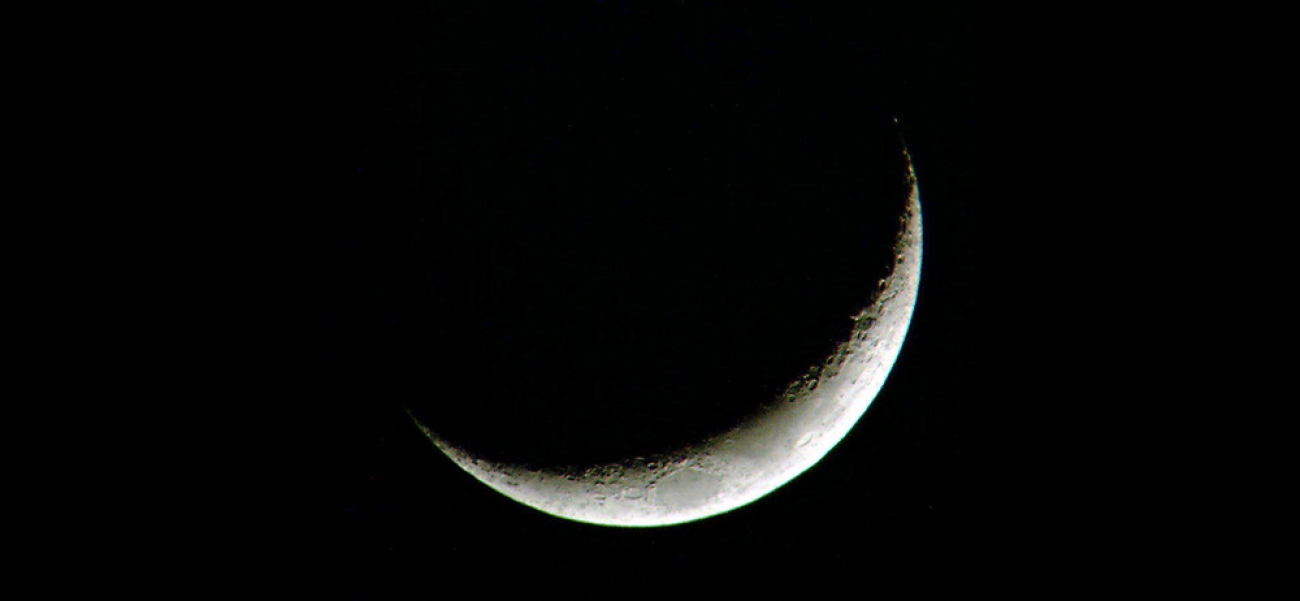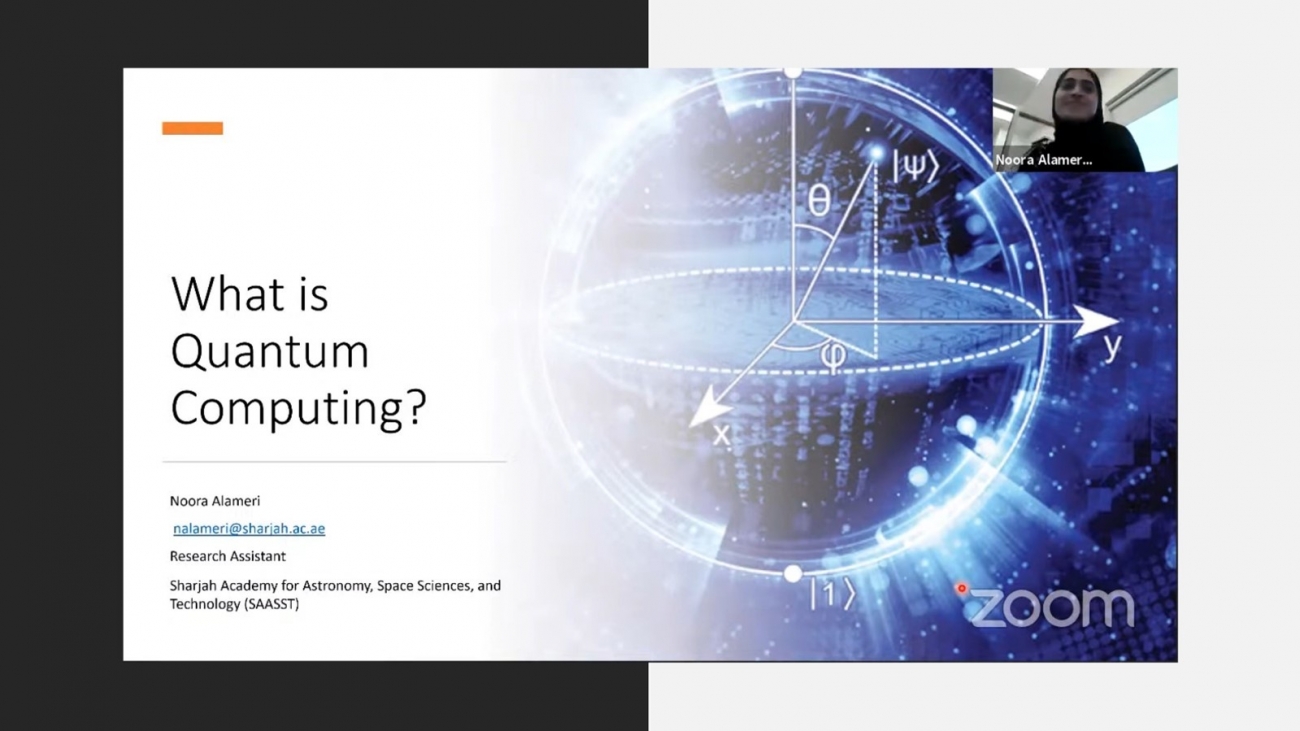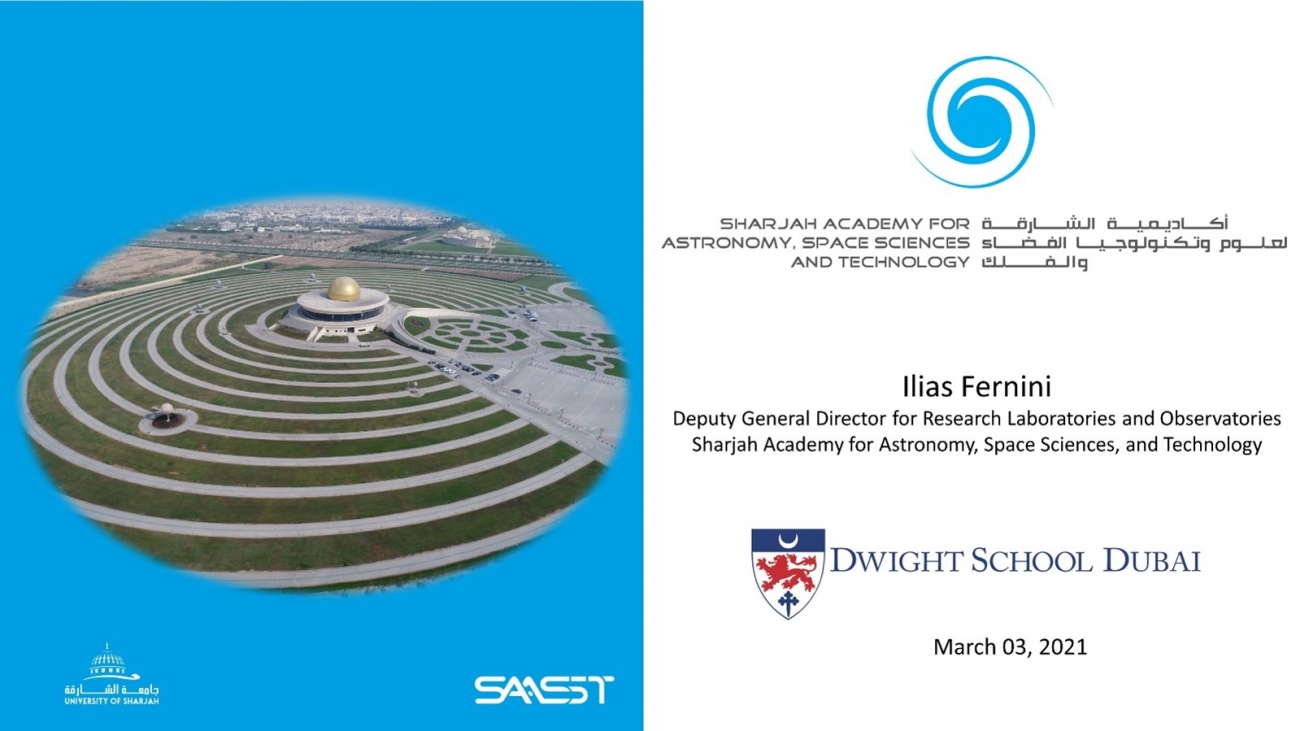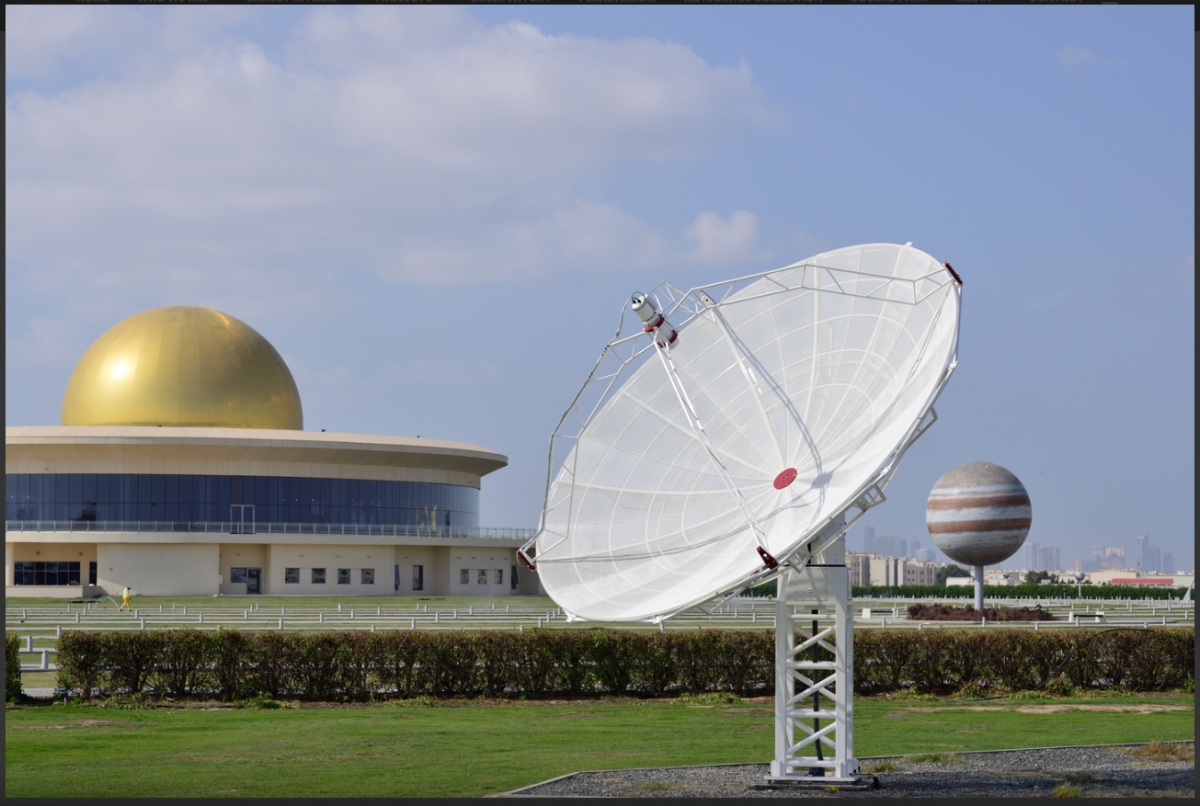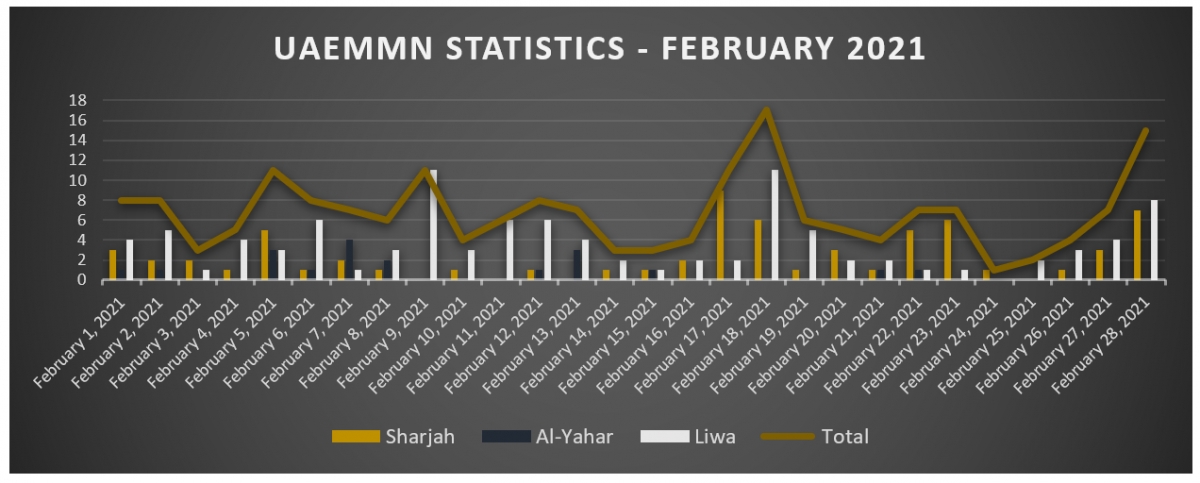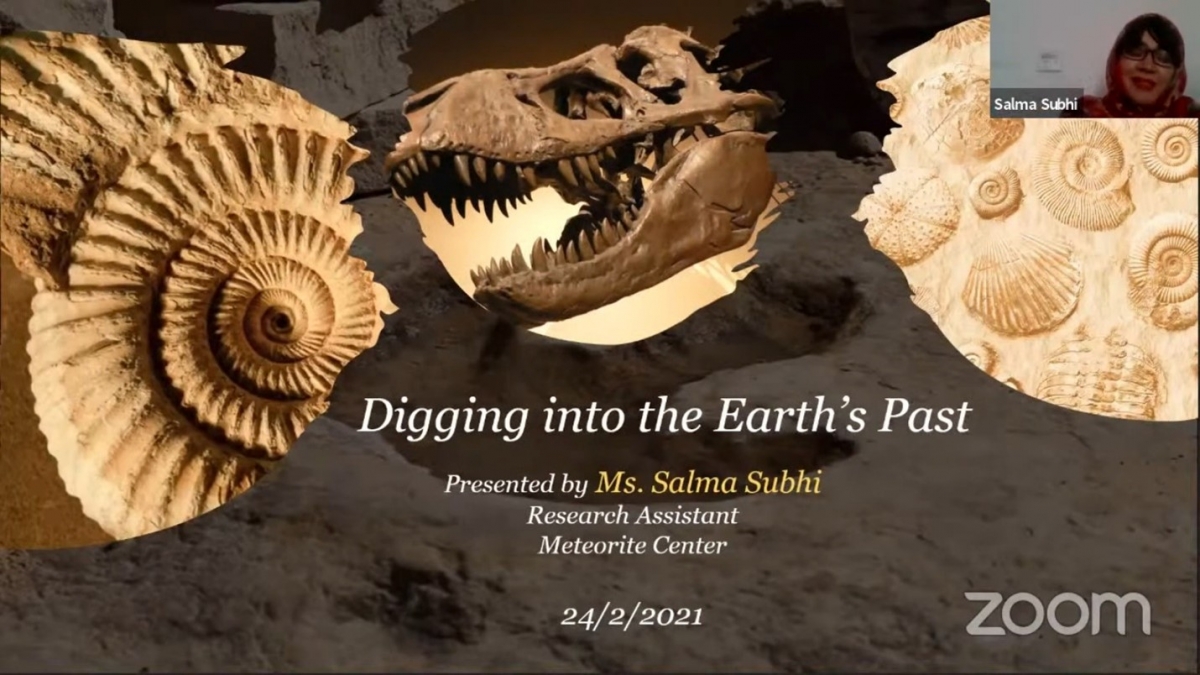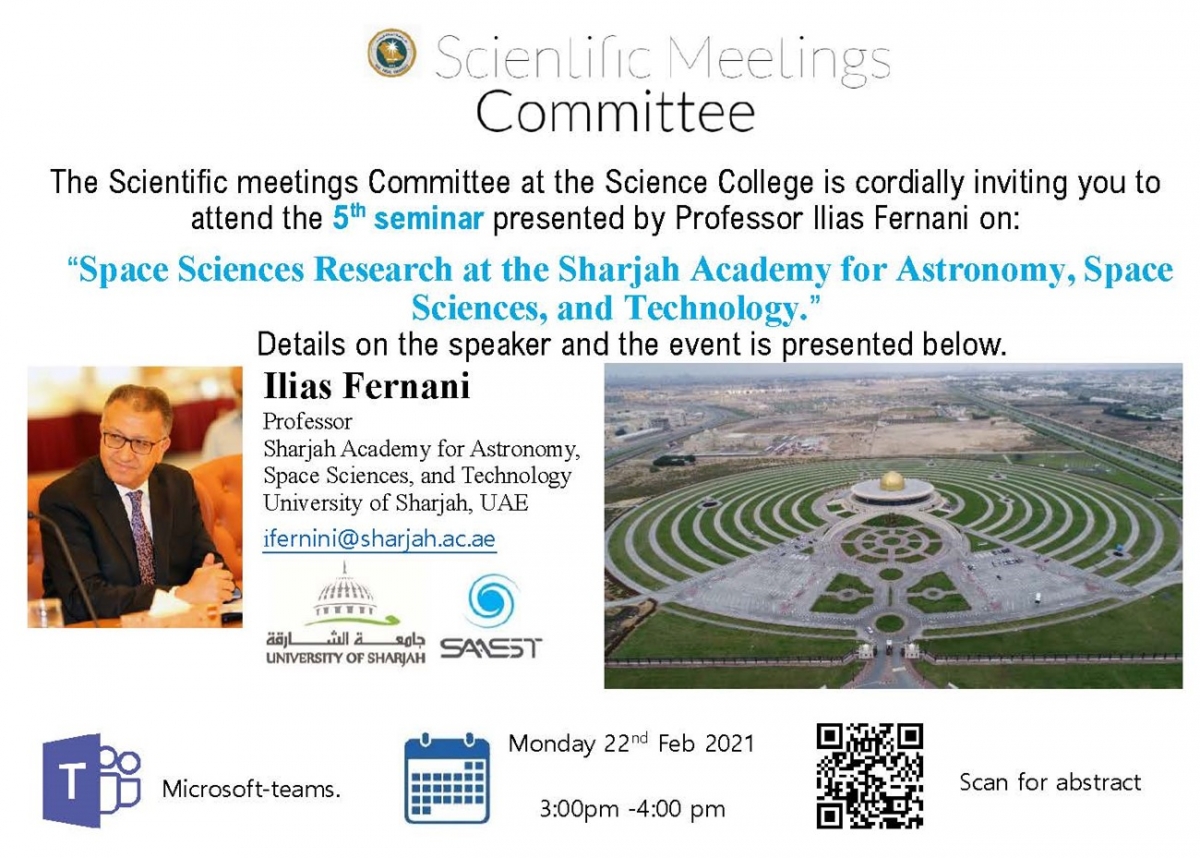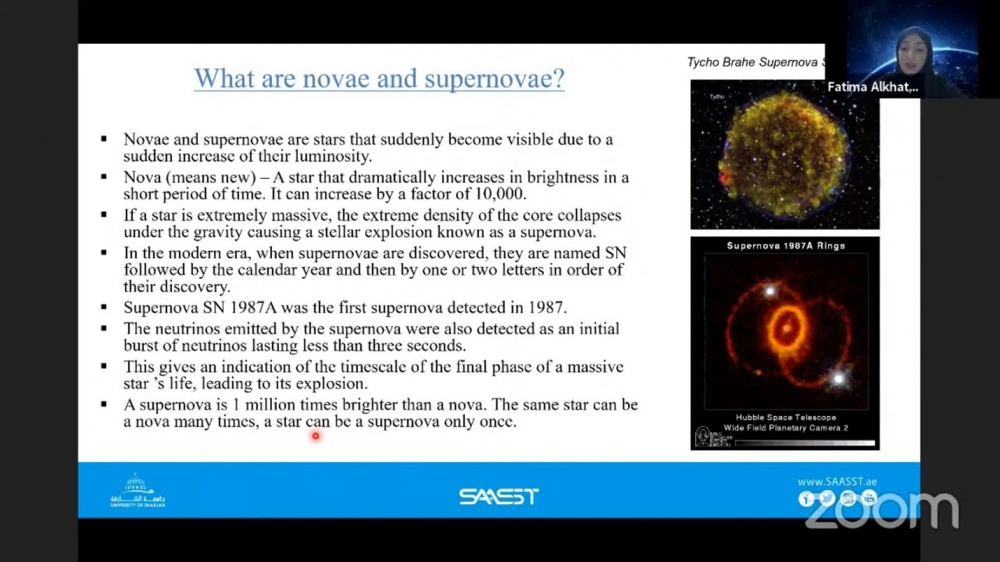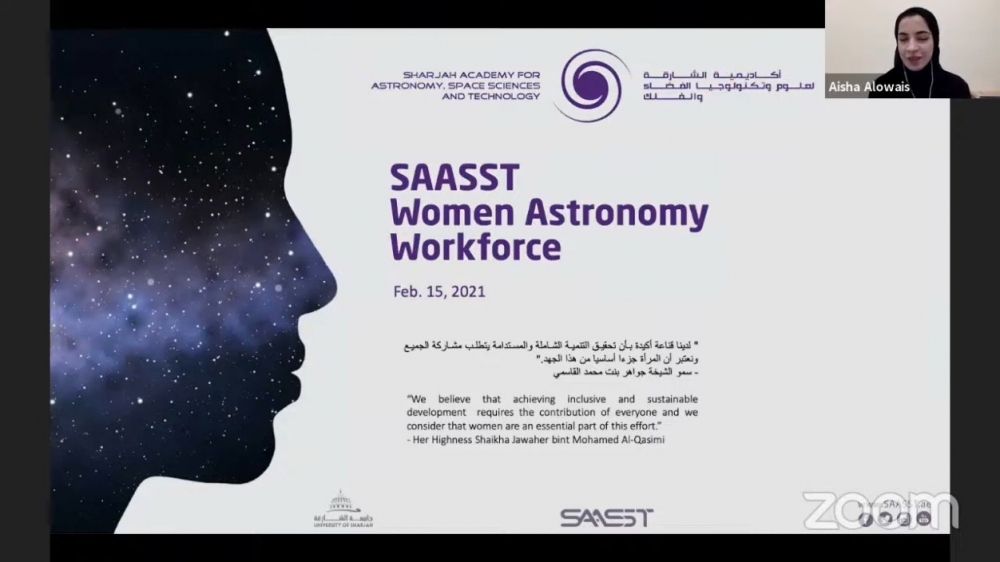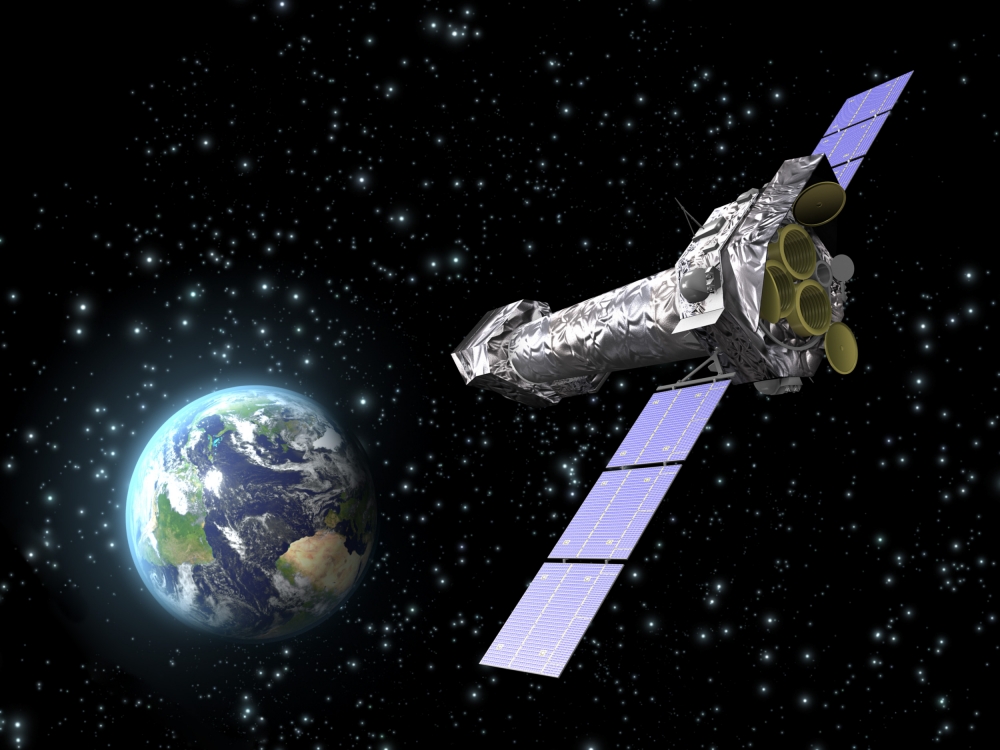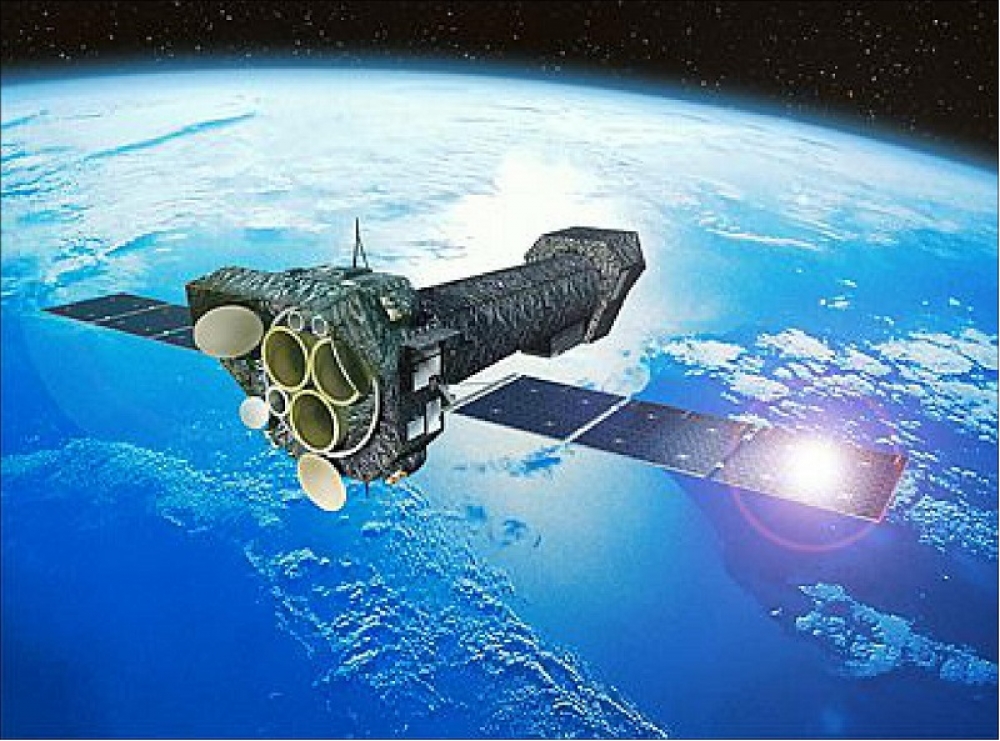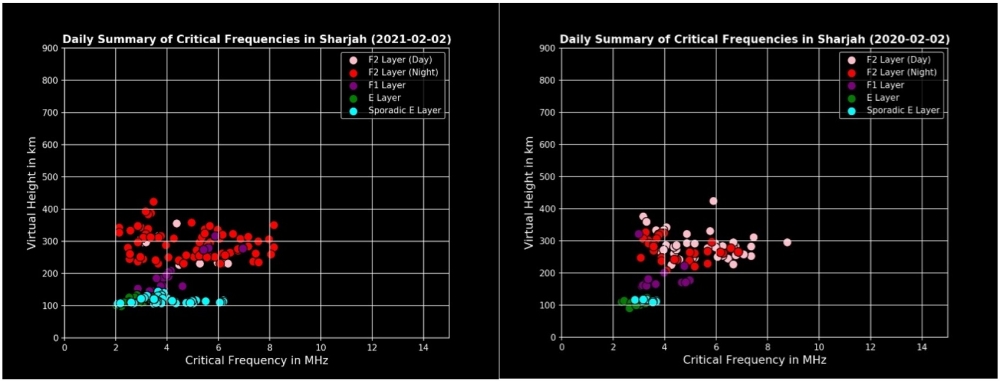
SAASST News (414)
Lecture on “X-ray Astronomy” by Ms. Noora Al-Ameri
As part of its program to enhance astronomy education, the Sharjah Academy for Astronomy, Space Sciences, and Technology (SAASST) organized a lecture on “X-ray Astronomy” on May 26, 2021. The lecture was given by Ms. Noora AL-Ameri, a research assistant at the SAASST High Energy Astrophysics Laboratory. Ms. Noora talked about the different types of objects that emit this X-ray radiation and the different physical processes responsible for this radiation. To observe X-ray radiation, space telescopes are used since X-ray radiation is absorbed by the Earth’s atmosphere, so instruments to detect X-rays must be taken to high altitude by balloons, sounding rockets, and satellites.
SAASST Bi-Weekly Lecture: Lecture on “Stellar Characteristics” by Mr. Marwan Shwaiki
As part of its program to enhance astronomy education, the Sharjah Academy for Astronomy, Space Sciences, and Technology (SAASST) organized a lecture on “Introduction to Stellar Characteristics” on May 19, 2021. The lecture was given by Mr. Marwan Shwaiki, the Deputy General Director for Plantarium and Outreach Program at SAASST. Mr. Marwan presented the properties of the different stars: brightness, color, surface temperature, size, and mass. The H-R diagram was introduced to explain stellar evolution that depends on one physical property of a star: its mass. A star can live billions or maybe trillions of years if its mass is low (less than 8 solar mass), or just a couple of millions of years if its mass is large (more than 8 solar mass).
Workshop on Galaxies
As part of its program to enhance astronomy education, the Sharjah Academy for Astronomy, Space Sciences, and Technology (SAASST) has organized a special workshop dedicated to galaxies on May 09, 2021. The program of the online workshop was as follows:
International Astronomy Day
As part of its program to enhance astronomy education, the Sharjah Academy for Astronomy, Space Sciences, and Technology (SAASST) celebrated the “International Astronomy Day” on May 02, 2021. The event was online due to current pandemic situation. All three units of SAASST participated in this celebration. More than 120 students followed the program online. The program was as follows:
Artificial Intelligence in Space Exploration
As part of its program to enhance astronomy education, the Sharjah Academy for Astronomy, Space Sciences, and Technology (SAASST) organized a lecture on “Artificial Intelligence in Space Exploration” on Apr. 28, 2021. The lecture was given by Ms. Aisha Al-Owais, a research assistant at the “Meteorite Center” and “Space Artificial Intelligence” at SAASST. Ms. Aisha presented a thorough presentation on the application of AI in space systems from spacecrafts to the study of the universe as a whole. Advances in AI have allowed us to make progress in all kinds of disciplines – and these are
Why and how will we live on Mars?
As part of its program to enhance astronomy education, the Sharjah Academy for Astronomy, Space Sciences, and Technology organized a lecture on “Why and how will we live on Mars?” on Apr. 14, 2021. The lecture was given by Mr. Amr Ansary, a scientific guide at the SAASST Planetarium. Mr. Amr presented the pros and cons of going to Mars and settle there. Mars was believed to be a live planet 3.5 billion years ago. Its present-day dead environment is the subject of intense research to answer the following question: what happened to it? Its thin atmosphere is 96% of carbon dioxide. Its magnetic field is very localized, unlike Earth’s magnetosphere. Despite these striking differences with Earth, the Martian surface looks like any region here on Earth: plains, valleys, mountains, and deserts.
Lunar Crescent Visibility Workshop
On Apr. 11, 2021, HE Prof. Hamid Al-Naimiy, the Chancellor of the University of Sharjah, opened the first lunar crescent visibility workshop under the title “Determination of Ramadhan and Shawwal 1442 AH Using Astronomical Calculations.” Prof. Hamid emphasized using precise astronomical knowledge to help determine the start of the Islamic months. At a time where technology is used everywhere, it is time for the Muslims to apply the latest technological astronomical tools to help set the Islamic calendar. The workshop was attended by several religious figures, i.e., HE Dr. Omar Habtoor Al-Darei, the Executive Director for Islamic Affairs at the General Authority of Islamic Affairs and Endowments, HE Dr. Hamad Al-Sheikh Ahmad Al-Shaibani, General Director of Islamic Affairs in Dubai, Prof. Awad Al-Khalaf, Acting Director of Qasimia University, and other religious authorities from Sharjah and Dubai. Prof. Mashhoor Al-Wardat, Prof. Ilias Fernini, and Mr. Mohamed Talafha gave different presentations that emphasized the different astronomical criteria used to set the conditions for the crescent visibility. The astronomers stressed the weather effects in making the observation of the crescent extremely challenging.
The Crab Nebula (Tau A)
Taurus A, famously known as the Crab Nebula, or Messier 001, is a supernova remnant (SNR) of the famous 1054 supernova, located in the constellation Taurus. The SNR was discovered by John Bevis in 1731. It was then independently observed by Charles Messier in 1758 and became the first object added to the Messier’s catalogue. It was reported by Chinese and other astronomers as a “new star” since it was visible to the naked eye. The supernova was visible in daylight for 23 days and for 2 years at night.
How to Communicate with the ISS?
As part of its program to enhance astronomy education, the Sharjah Academy for Astronomy, Space Sciences, and Technology organized a lecture on "How to Communicate with the ISS?" on Mar. 24, 2021. The lecture was given by Mrs. Tarifa Al-Kaabi, a SAASST research engineer at the CubeSat. Ms. Tarifa explained in full detail how the International Space Station communicates with Earth and how the astronauts communicate with each other inside and
Astronomical Predictions for Shaaban/Ramadhan/Shawwal 1442 AH
For more than 1.5 billion Muslims, Ramadhan is next month. But when exactly? Everyone is anxious to know when it will start. Every year the same question is being asked, and astronomers are the first to be pointed at for a clear and straightforward answer. Some say that we are still arguing about when Ramadhan starts or ends despite all of the technological developments. The matter is more than just laying down some astronomical numbers
What is Quantum Computing?
As part of its program to enhance astronomy education, the Sharjah Academy for Astronomy, Space Sciences, and Technology organized a lecture on "What is Quantum Computing?" on Mar. 10, 2021. The lecture was given by Ms. Noora Al-Ameri, a SAASST research assistant at the High Energy Astrophysics Laboratory. Ms. Noora started her lecture with a comparison between a classical and a quantum computer. Quantum computers are machines
SAASST Gives a Lecture at Dwight School Dubai
Dwight School Dubai invited the Sharjah Academy for Astronomy, Space Sciences, and Technology (SAASST) to give a lecture for its science students and teachers. Mrs. Naima Bouhraoua, Head of Science at Dwight School, invited Prof. Ilias Fernini to highlight the recent research developments at SAASST and discuss the different Mars missions, Hope (USA), Perseverance (USA), and Tianwen-1 (China).
Radio Observations of the Giant Radio Source NGC 315
NGC 315 is a Fanaroff–Riley type I (FR I) radio galaxy located in a galaxy cluster in Pisces' constellation. It has an angular size of 0.967 degrees and a linear size of about 1.1 Mpc, making it a Giant Radio Source (GRS). The galaxy itself has a very rare Z-shaped structure, observed in 1976 by Bridle et al.
A Very Low Monthly Meteor Activities for UAEMMN in February 2021
Meteor activity in February 2021 was relatively weak. The number of meteor observations by the UAE Meteor Monitoring Network reflected the low presence of meteors in the UAE sky. However, that alone was not the reason. Foggy skies and light sources disrupted the observation by the towers, especially in Al-Yahar.
SAASST Participates in the UAE Space Agency Workshop "UAE Innovates 2021"
In commemoration of the UAE Golden Jubilee and the UAE Innovation Week, which is being held under the slogan "UAE Innovates 2021", the UAE Space Agency has organized a workshop to stimulate innovative thinking and explore innovations in the national space sector. The workshop hosted a series of presentations from the Emirates Space and Innovation Group (ESIG).
Digging into the Earth's Past
As part of its program to enhance astronomy education, the Sharjah Academy for Astronomy, Space Sciences, and Technology organized a lecture on "Digging into the Earth's Past" on Feb. 24, 2021. The lecture was given by Mrs. Salma Subhi, a research assistant at the SAASST Meteorite Laboratory. Mrs. Salma presented an in-depth analysis of Earth's past and its different formation stages, especially the tectonic plates system. She discussed how plates
SAASST Lecture at King Faisal University
Prof. Ilias Fernini, the SAASST Deputy General Director for Research, was invited by King Faisal University in Saudi Arabia to give a virtual presentation about the Sharjah Academy for Astronomy and Space Sciences. The lecture was organized by the Scientific Meetings Committee at the Science College of the King Faisal University.
SAASST Lecture at the Academy of Excellence of India
Ms. Aisha Al-Owais, our SAASST research assistant at the Meteorite Center, gave an excellent presentation about the Mars Hope Mission at the “International Virtual Workshop – Mars and History” on Feb. 21, 2021. The workshop was organized by the “Academy of Excellence of India.” Ms. Aisha also outlined SAASST’s contribution to the UAE space program, and the different research laboratories, especially the Meteorite Center.
More...
Novae & Supernovae
As part of its program to enhance astronomy education, the Sharjah Academy for Astronomy, Space Sciences, and Technology organized a lecture on “Novae & Supernovae” on Feb. 10, 2021. The lecture was given by Ms. Fatima Al-Khateri, a planetarium guide at the SAASST Planetarium. Ms. Fatima presented the theory behind each of these two objects regarding the formation and differences between the two. Novae can only happen if you have a
SAASST Women Astronomy Workforce
As part of its participation in the IAU "Women and Girls in Astronomy" project, the Sharjah Academy for Astronomy, Space Sciences, and Technology organized a lecture on "SAASST Women Astronomy Workforce" on Feb. 15, 2021. All of SAASST female researchers participated in the lecture: Aisha Al-Owais (Meteorite Center), Maryam Esa Sharif (Meteorite Center), Noora- Al Ameri (High Energy Astrophysics), Maryam Al Qasemi (High Energy Astrophysics), Asmaa AlHameed (Radio Astronomy Lab), Salma Subhi (Meteorite Center), Tarifa Al-Kaabi (CubeSat Laboratory), and Fatima Al-Khateri
Exploring IGRJ18027-2016 using Archival Observations from XMM-Newton Telescope.
IGRJ18027-2016 is not a geographical location nor a phone number. It is the name of a supergiant high mass X-ray binary system. An X-ray binary system is composed of a star and a compact object. The compact object can be either a white dwarf, neutron star, or a black hole, and the companion star can be of different masses. This system consists of a neutron star and a supergiant star.
Geometrical differences between two X-ray instruments onboard the XMM Newton telescope: (The EPIC-PN and EPIC-MOS)
The XMM-Newton telescope consists of two major X-ray instruments: the European Photon Imaging Camera (EPIC) and the Reflecting Grating Spectrometers (RGS). EPIC is carrying a set of three X-ray CCD cameras, a PN camera, and two MOS (Metal Oxide Semiconductor) cameras, all operating in the 0.3−12 keV energy range.
A Glimpse of Strengthening - Solar Cycle 25
The figure on the left shows the critical frequencies of different ionospheric layers plotted against their virtual heights, as observed by the SAASST ionosonde over 24 hours starting from midnight on February 02, 2021, while the figure on the right shows a similar plot generated for data collected during the same period in 2020.
Radio Whispers during the Solar Minimum in January 2021
During January 2021, no major sunspots appeared on the Sun surface like during November and December 2020. There were no geomagnetic storms either. Only one major solar event was detected by the SAASST “Decametric Radio telescope (DRT)” on January 8th when a huge filament of magnetized materials was ejected by the Sun, but it missed Earth as NOAA reports. The DRT detected a series of minor solar radio bursts (micro solar radio storms) with typical solar radio emission patterns but with very low intensities. This unexpected short quiet Sun phase will not last for an extended period. The Solar Cycle 25th had already started, and we expect the Sun to be active again in the upcoming months.



